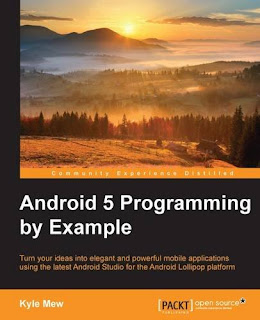Android 5 Programming by Example
About This Book
- Design and customize GUI using material design to create attractive and intuitive layouts easily
- Bring your designs to life with Android 5's powerful and extensive Java libraries, new sensors, and new platforms such as TVs, wearables, and cars
- An example-based guide to learn and develop applications for Android 5
If you have a great idea for a mobile app, and some familiarity with Java, or a similar procedural programming language, then all you need is this book to turn your idea into a reality.
What You Will Learn
- Set up an effective development environment to create Android apps from scratch
- Control the layout structure and design and edit code to control screen events
- Respond to user interaction using Java and XML with your app
- Keep your users up to date with Android's new notification framework
- Implement Google APIs such as maps and other Google Services
- Create apps for televisions, cars, and wearables and build home-screen app widgets
- Add audio and video playback to your apps using the AudioManager and MediaPlayer classes
- Program the two new Lollipop widgets, CardView and RecyclerView
- Compile your apps, distribute them on the Google Play store, and build in a variety of ways to monetize them
In Detail
Android is a mobile operating system that runs on a staggering number of smart phones and tablets. Android offers developers the ability to build rich and innovative applications written using the Java programming language.
Beginning with detailed instructions on how to install and configure the Android SDK, Studio, and Virtual Device Manager, the book moves on to creating a simple, but working, "Hello World" app that can be run on a real device or emulator.
The book then moves on to layouts and the visual design of Lollipop apps. A new app is begun to demonstrate this and expanded as we move further, and, once material design has been introduced, the book moves on to the Java coding aspect and how to write code that responds to user interactions via callback methods such as touchscreen gesture listeners. No book on Lollipop APIs would be complete without explaining how the new Android TV, Wear, and Auto SDK tools work and how they can be utilized to either create new apps or convert those originally written for other platforms.
The book concludes by demonstrating how to package and deploy your finished app on the Google Play store.

No comments:
Post a Comment